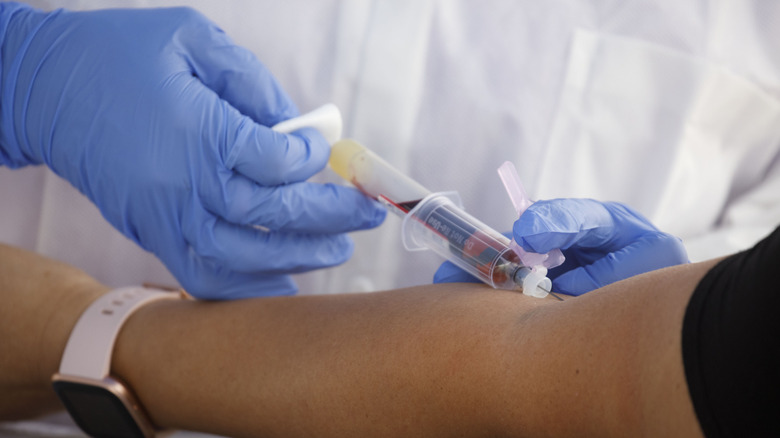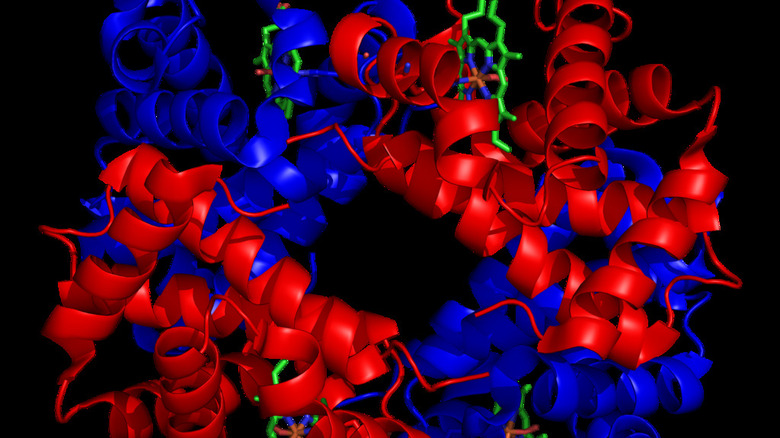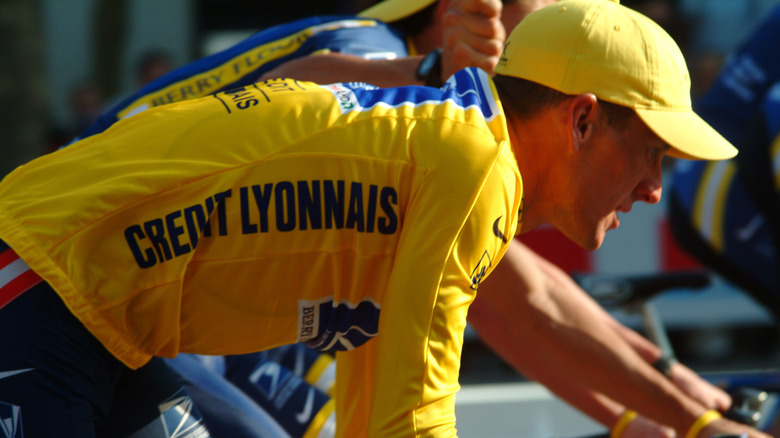What Is Blood Doping?
In the world of elite international sports, winning is everything. For the athletes who have trained most of their lives, nothing short of first place can cement the legacy of the best years of their lives. For the nations who support them, victory brings people together, elevating spirits and boosting morale.
Here, at the dawn of the 21st century, we are beginning to reach the pinnacle of what the human body is capable of. A 2015 article in Sports Medicine (posted at the National Library of Medicine) notes that athletic performance has begun to flatline in the last 100 years. We have reached the point where the only way for some athletes to achieve an edge is by hacking the human body.
The most well-known hack for increasing athletic output is using anabolic steroids to increase muscle mass. In the early 2000s, as many as 85% of professional baseball players were taking steroids, according to José Canseco (via Baseball Reference). In the world of endurance sports, some athletes take a variety of substances to increase their aerobic capacity, a practice known as blood doping (via WebMD).
How does it work?
WebMD identifies three principle methods of blood doping: transfusions (either of one's own blood or from someone else), injections of synthetic oxygen carriers, and erythropoietin injections. All three rely on the same basic principle: boosting the oxygen-carrying capacity of the blood.
If athletes decide to blood dope using a transfusion, they will most likely do it via a transfusion of their own blood, or autologous transfusion. The blood is taken months before it is used to give them time to replenish their blood. The red blood cells are then separated and frozen. Finally, the RBCs are reinjected days before they are needed to give the athletes time to recover their iron levels (via British Journal of Sports Medicine).
Synthetic oxygen carriers work in one of two ways. The first is by hemoglobin alternatives: a blood transfusion with fake blood. Hemoglobin is suspended in a blood substitute, binds with oxygen from the lungs, and is delivered throughout the body. The second is via a class of compounds called perfluorochemicals. Unlike hemoglobin-based methods, PFCs are fluids in which oxygen has been dissolved. When injected, the dissolved oxygen in PFCs are free to be used by the body (via the University of Southern California's Illumin Magazine).
Erythropoietin is a hormone naturally produced by the body. EPO is produced by the kidneys to regulate the amount of RBCs produced by the bone marrow. When it is injected, it induces the body to produce more RBCs than it normally would, increasing oxygen supply (via Bleacher Report).
Sounds good. What's the drawback?
The primary drawback of these techniques is that they make the blood thicker. Thicker blood (hyperviscosity syndrome) means the heart has to work harder to move it around the body. All that extra work puts the body at risk of cardiovascular disease and a host of other problems (via WebMD).
Blood transfusions carry their own set of risk factors as well, especially if the blood is not your own. Couple this with the fact that illicit transfusions likely mean that it is being performed by someone who is less than qualified, and you can be at risk for your immune system attacking the transfused blood, or worse, graft-versus-host disease, where transfused white blood cells attack your blood marrow. That one will likely kill you (via Mayo Clinic).
EPO is legitimately used to treat patients with anemia, but even its proper use comes with some pretty serious side effects. Cytokine & Growth Factor Reviews (also posted at the National Library of Medicine) reports that EPO could accelerate the growth of cancer cells. Worse, they report that there is actually a decline in cerebral oxygen levels in rodent models.
Blood substitutes are risky as well. PFCs can reduce platelet counts (thrombocytopenia) making clotting more difficult. Hemoglobin-based blood substitutes can cause permanent kidney damage. Both techniques can leave you with a host of other symptoms as well, which is why they're usually reserved for those with serious illnesses.
So who's doing this?
A 2020 study in Frontiers in Physiology found that around 15% of track and field athletes engaged in blood doping. It also found that statistically, more women than men were doing it. Besides track and field, blood doping would be beneficial for any sport that relies on endurance, such as cycling, swimming, or cross-country skiing (via Live Science).
Perhaps the most famous case of blood doping involves American cyclist Lance Armstrong (above). In 2013 Armstrong admitted to using EPO for all seven of his consecutive Tour de France victories. He said in an interview that he didn't believe it was possible to win the Tour de France at that time without performance enhancing drugs (via The Guardian).
In 2019, Max Hauke, an Austrian cross-country skier, was arrested mid-transfusion. The arrest occurred in the middle of the Nordic World Ski Championships and was part of a raid called Operation Bloodletting in which nine people were arrested in both Germany and Austria (via BBC News).
How long has this been going on?
Athletes have always sought to give themselves an edge over their competition. In the ancient Olympics, competitors would consume animal testicles to imbue themselves with the animal's power. In reality, they were "doping" with testosterone. The gladiators in Rome would take strychnine (yes, rat poison) as a stimulant to give them an edge (via Physical Culture Study).
The genesis of blood doping began in the wake of the 1968 Mexico City Olympics. The 2 km elevation meant that there was less ambient oxygen in the air and sports scientists began looking for ways to augment blood oxygen. The easiest answer was more blood and transfusions were used extensively by endurance athletes through the '70s and '80s (via Oxford University Press's OUPblog).
EPO was first discovered in the early 20th century but it wasn't until 1983 that a method was discovered for mass producing it (via American Society of Hematology). It was first brought to public attention at the 1998 Tour de France (the same year of Lance Armstrong's first victory) when the Festina team was caught with EPO in one of their support cars (via Australian Academy of Science).
Scientists continue to develop tests for the various types of blood doping, but it is a never-ending arms race between the athletes who want to win and the officials who want to keep competition fair. But blood doping has been a part of sport for over 50 years now, and it doesn't appear to be going anywhere.




